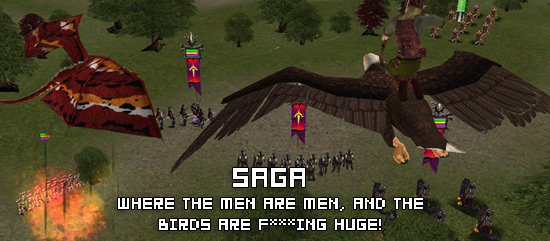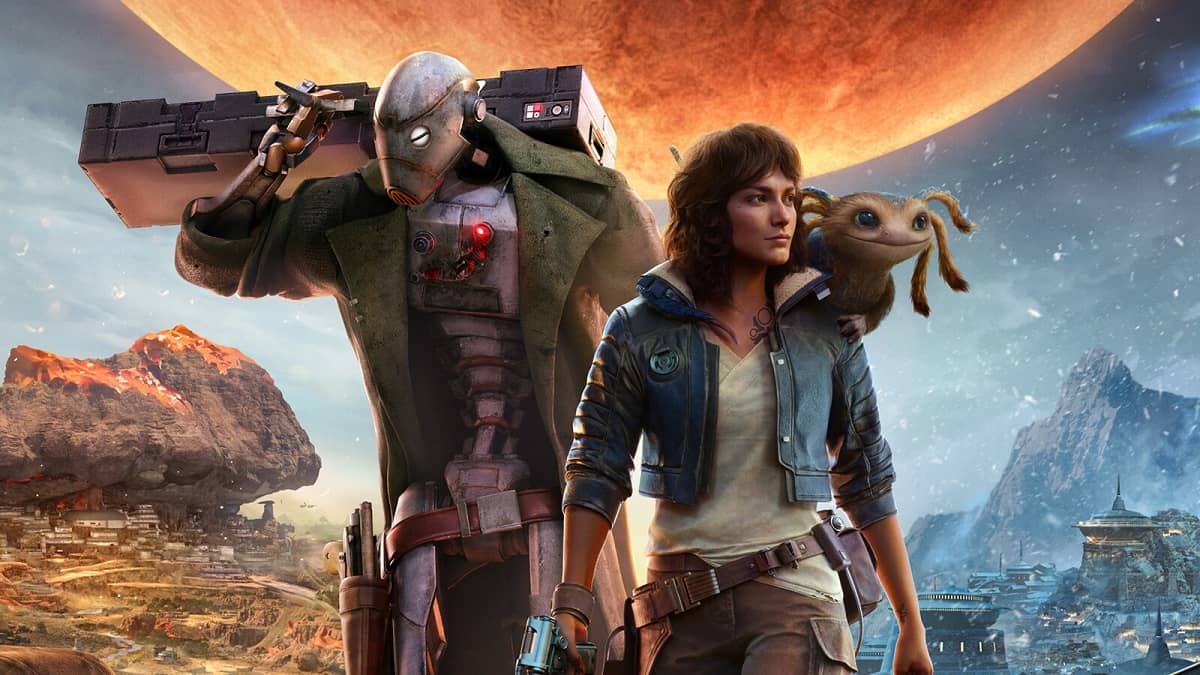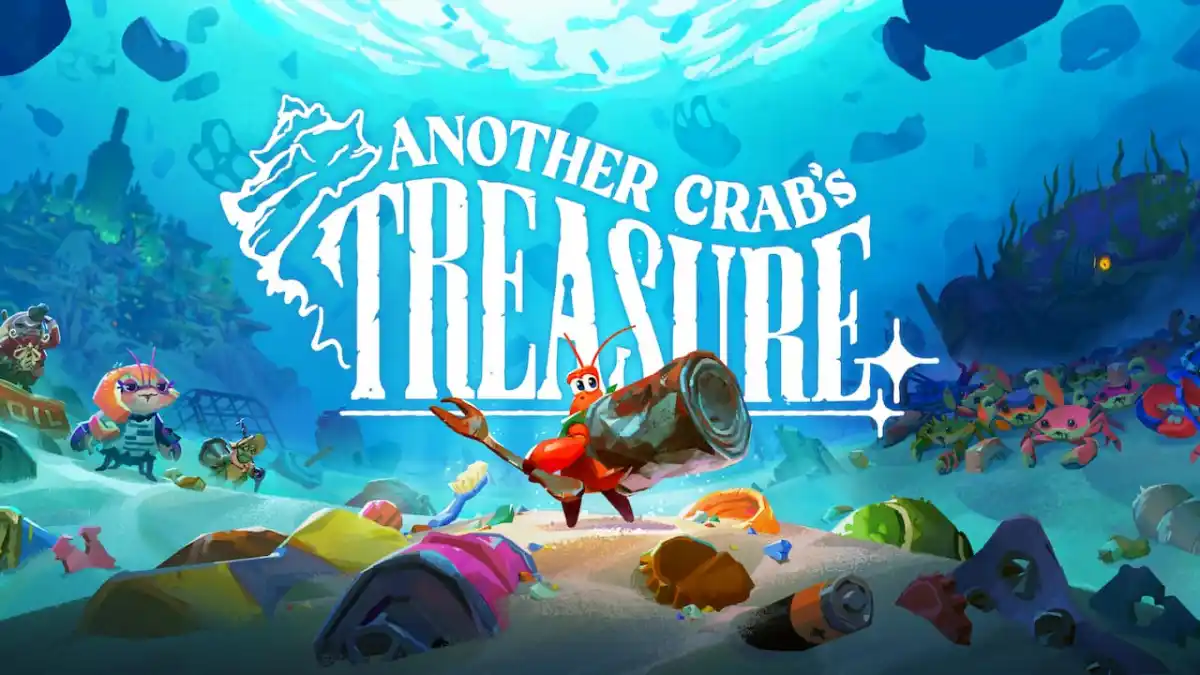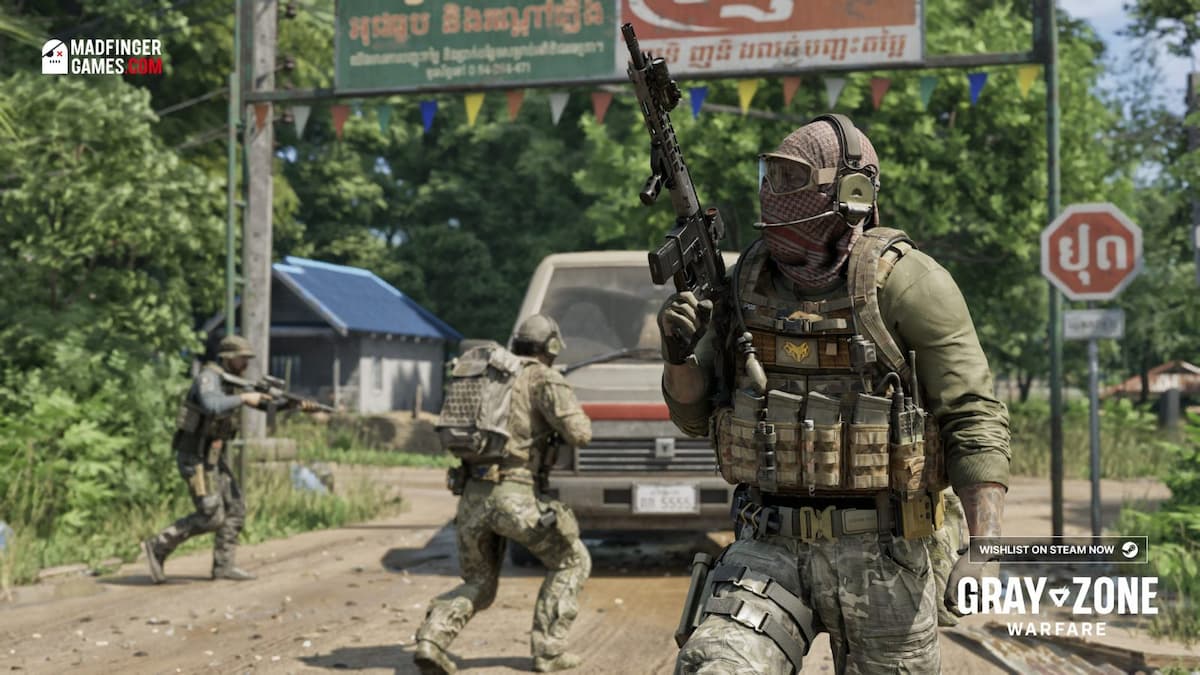In recent years, the MMO-space has metaphorically exploded. All manner of MMOs have sprung up vying for your time and purchasing dollar with precious little to distinguish one from the other. Sure, one might have laser guns where another has orcs, or game A might have superheroes while game B has depressingly lonely people in fox costumes, but the general ideas have all become so cliché as to render the entire scene as stagnant as an Appalachian gene pool.
Then, from stage left, comes SAGA, an MMORTS that combines the TCG-sensibilities of Magic: The Gathering, the MMO persistency of all the games I obtusely referenced above and the wide-ranging fantasy-RTS trappings of Total Annihilation: Kingdoms to form a title unlike anything in the market today.
Yesterday I had the chance to conduct an interview with SAGA producer Jason Fuller, which you can find beyond the jump. Mr. Fuller was surprisingly candid about everything I asked him, and we appreciate his willingness to go beyond the usual PR-speak and talk to us like humans (instead of dollar signs).
In addition to the interview, Wahoo Studios (the developers behind SAGA) are giving us the chance to hand out some pre-beta keys to our loyal readers. Since I used up all of my latent creativity charming French teen girls earlier in the day, I’m simply too lazy to come up with a viable contest for the giveaway, so I’m making you guys do the work for me. Hit up the comments, and the best contest ideas will win a pre-beta key for SAGA and the high probability that we’ll use your idea the next time we’re feeling really lazy.
Nex:
The MMO market is flooded with me-too titles that are so strikingly similar as to be almost indistinguishable by anyone outside of the hardcore audience. How is SAGA unique?Jason Fuller:
Me-three? I think it’s pretty fair to say that SAGA is, in fact, unique. The persistent city building, the collectible/trading system, and the focus on troops and spells as your greatest persistent assets are all exciting elements that help set SAGA apart from other games in the genre. The big difference comes in the pride of ownership. Outfitting your troops with new weapons and armor and leveling them up makes battles all the more exciting. Strategy takes on a lot of added realism when you put a ton of time and effort into constructing your city walls and other buildings… when they take damage, there’s a sense of urgency that doesn’t exist in any other game I’ve seen.Nex:
Bigger hurdle for an MMORTS: Online lag, or balancing complexity with accessibility?JF:
We haven’t seen much lag, except slight delays for some of our overseas testers, who are currently playing through our local servers until we have our international servers up and running. The truth is that in, say, Half-Life, you’re trying to snipe a headshot on your opponent, and you miss because a tenth-of-a-second lag. In real-time strategy games, it’s not so big a deal, typically, even in our four-player instanced battles. Decisions are strategic, and don’t rely on precise targeting. So, to answer the question, balancing complexity with accessibility is a bigger challenge. We’ve done our best to keep it simple for the beginners, and then added a lot of complexity and depth in the strategy. Choosing the right combination of spells and special troops (over 150 unique units to choose from) is a never-ending challenge for players, especially in PvP warfare. It’s as though you took something like Magic: The Gathering and made it real-time. Choosing your deck is pretty important, as is how you play it. And then add city defenses, guilds and espionage into the mix, and you’ll start to see how complex Saga can get for hardcore players.Nex:
By placing SAGA in the MMORTS genre you’re placing yourself up against the two flagship titles of one of the world’s top PC developers. Bigger competitor: World of Warcraft or Starcraft 2?JF:
Hmmm… I don’t know if I’d consider either of those games our competition. While the fantasy elements, troop customization — you can earn more powerful armor and weapons through quests — and the persistent world should appeal to MMORPG fans, I think the MMO element we inject into RTS is going to challenge traditional RTS games more than any RPG. In that sense, we’re up against Age of Empires and Total War as our main competition. SAGA should really appeal to fans of those games, because of the epic strategic battles and the aforementioned persistence of your city and troops. When you get into a big battle, it feels like the future of your empire is on the line, and you want your most experienced troops to live to fight another day. It gets pretty tense.Nex:
You competition has pretty stringently adhered to the $15/month pricing scheme. What’s the pricing scheme for SAGA? More of the same, or radical new direction?JF:
Radical new direction, I’m happy to say. No subscription fees. You can play the full version of the game as long as you want without limitation. Our only revenue comes through a booster-pack purchasing model. Players can buy booster packs with troops and spells. But we start you off with enough troops and spells to get you going, and we’ve found that a few hours trading with others through the market can get you anything you need, or joining a guild and getting a few extra troops from friends does the trick. So you can play SAGA for free, but we believe most players will at some point want to have the fun of opening a shiny new pack and crossing their fingers they get a Dragon or Demon or Mech giant.Nex:
The setting for SAGA is a unique, custom world, built specifically for the title, though it seems to have some unique influences regarding the people, places, and events it contains. Obviously there’s a touch of Tolkien (as you can’t make a fantasy game without a nod to Tolkien), but what would you cite as other influences on the title?JF:
Yes, there’s homage to Tolkien here, certainly, and I suppose Dungeons and Dragons somewhat (which is really just Tolkien again, isn’t it?). One interesting influence has been tabletop gaming — Warhammer and other miniatures games. The collectability has ported excellently into an online setting, but of course we didn’t adopt the slow pacing and turn-based elements. Much of the building architecture, voice accents and troop outfits were derived from historic earth civilizations, for each of our five factions.Nex:
With the surprising success of RTS titles like Command and Conquer 3 and Battle for Middle Earth on the Xbox 360, would you consider a console release for SAGA?
JF:
Absolutely. We will go to console as soon as we can, but we want to have a sizable community in the PC market first.Nex:
The system requirements of SAGA say that 56kbps is an acceptable connection speed, but, well, in my experience 56kbps is only acceptable for downloading pornography in the ASCII format. Is Saga going to be realistically playable on 56kbps?JF:
The bandwidth required for an RTS is surprisingly small. Exact positioning of units need only be sent every tenth of a second or less, without at all changing the quality of game play. I have personally played for fun on a dialup connection, and haven’t really noticed any disadvantage. We are still testing the limits of our bandwidth. Other than battle, you do have a longer load-time wait in certain areas, but it’s free to try, and we’ll let players decide what connection speed is all right with them for now.Nex:
Based on all I’ve seen, SAGA seems to combine the traditional MMO and RTS genres with the card battling genre. Is this an a creative choice that just so happens to alleviate possible issues with network lag, or was it a conscious design decision created explicitly for that purpose?JF:
We went with the collectible model because we thought it suited the RTS perfectly. In a sense, collectible card and miniature games are the brick-and-mortar version of RTS gaming. The persistency of our troop development pushed troops to become the most valuable and exciting part of SAGA, and the collectability really brought them to center stage. In a traditional RTS, you just build troops out of a barracks or similar structure, send them into battle to die, rinse, repeat. In a persistent RTS, the troops aren’t just fodder. They can die, they can gain levels, and their equipment and skills are permanent assets of your empire. So making them collectible and tradable was the best way to make that value exciting. When a player gets that golden ticket in a booster pack, there’s no better feeling.
Thanks for the opportunity to answer some truly original questions. Game on.




